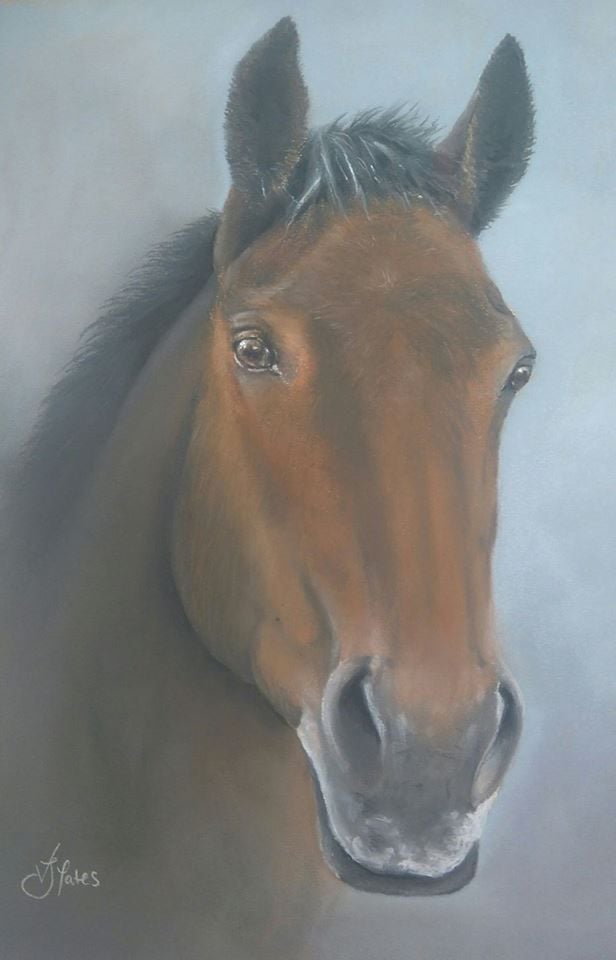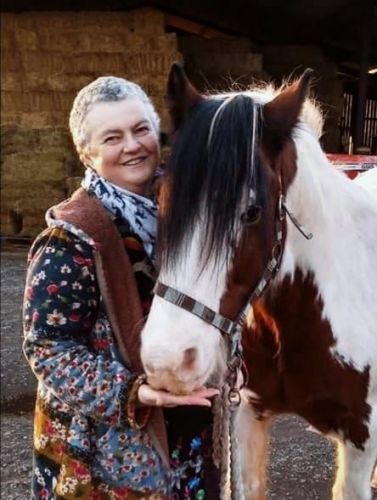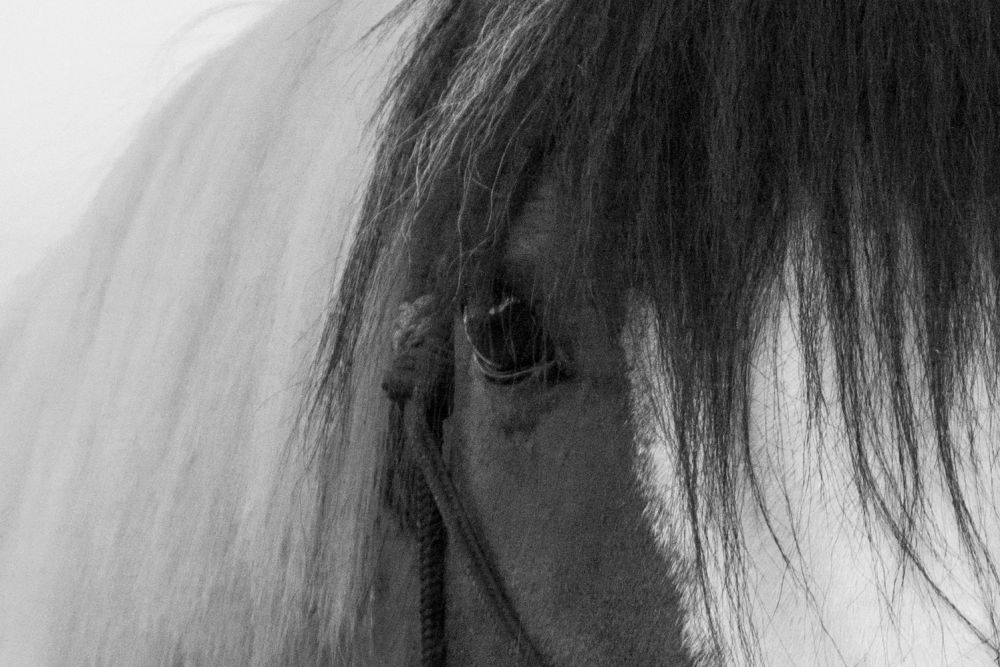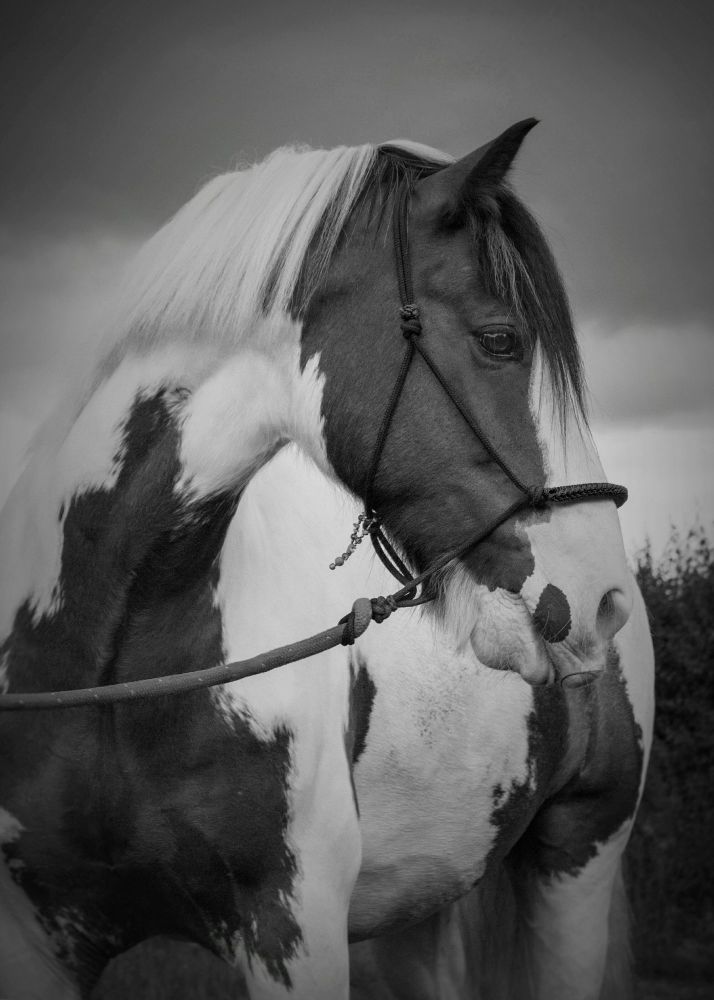Great Minds and Educators
Posted on
For sure there are many great minds and educators in this world. Hundreds of books have been written, DVDs to watch, websites, horsemanship clinics, etc. All have a valuable place. However when we look at horsemanship half of the partnership is the horse. Horses possess great minds and make fantastic educators. A horse is like a mirror reflecting right back at us the very aspects of we need in a way of personal development. Think about what qualities our horse is looking for from us as their partner. If we lack these it will turn up in our relationship with our horse. Sometimes it is uncomfortable to recognise what we need to do to step up to be the partner our horse needs and expects. Horsemanship is as much about personal development. They say when the student is ready the teacher will arrive. Teachers can have 2 legs or 4. Your horse can be your personal teacher and guide. Often it is only our horse that can teach us.

My once in a lifetime horse Merlot, that I rescued from a life of abuse taught me so much. The first I had to learn was no matter how much I loved Merlot that love was not going to be returned until I had proven without doubt I was worthy. Although he was not able to return my love for a long time I had to consistently give unconditional love. I learnt I had to freely give with no expectation of it being returned. It taught me to wait until Merlot felt comfortable to freely love in return. Read for FREE my published article - The Power of Love. When I had proven myself to him to be trustworthy, respectful and through enjoyable quality time together the bond grew from strength to strength and little glimmers of love from Merlot shone through like precious diamonds. Giving him unconditional love helped him learn to love, open his heart and let me in and over time this love and bond deepened. One of the lessons my teacher taught me was to put love into everything I did with him, to make love my goal. To show the way I had to give love unconditionally, wait, practice patience, not to give up and to look for and appreciate the smallest glimmer of a try. The glimmer of a try is the ignition to greater things to come and must be treasured just like a fleck of gold when gold panning. Read for FREE my published article - Panning for Gold. The first article in a series about motivation in horsemanship.
Horses are mirrors they reflect back to us exactly what we need to see in ourselves. It is a question of being brave enough to open yourself up to this experience. Being strong enough to listen and humble enough to learn. Switching roles from the human educating a horse to being the pupil being educated by the horse for many is a huge challenge. One of our greatness is that humans can rethink, change our approach and remake ourselves. The only thing that stands in our way is our-selves, beliefs, values, mind-set, and thinking. What you think is what you become, as it shapes your actions and actions become life choices and priorities. Being open to new ways of thinking, new approaches is not as easy as it sounds. Read for FREE my published article – The Power of Thoughts.
Being open minded isn’t as easy as it sounds. There are many pressures that keep us from trying new or different approaches. Peer pressure is one, if you are on a livery yard you will find people are always happy to offer their advice and help. What you may find in short supply is people’s understanding and tolerance to approaches they know little or nothing about or disagree with on principal. You may even be unlucky enough to have an “expert” or “experts” on the yard who will expect you to follow their advice as clearly they know it all and know what is best for not only your horse but you too. Using a different approach to what they expect you to use can then cause you further problems. You may even been seen as a maverick for going against the norm. I certainly was seen as a maverick, a few people on the yard had very little tolerance or understanding of my approach. I found it was best to quietly work by myself. Read for FREE my published article – Maverick. Sadly as a horsemanship instructor I still see people following natural horsemanship on livery yards working in isolation, with others around them happy to criticise and undermine. It takes great strength of character to have faith when you are in the minority. Myself, I struck out following my own path of natural horsemanship. I was not affiliated to the well-known methods, so even more of a target for disrespect from fellow liveries on the yard. Even when my successful methods had been showcased and published in national magazines they did not stop belittling my horsemanship. Going it alone and against the mainstream is never easy. I remind myself daily that what mattered was my relationship with my horses, not the relationships with these small minded people. I used to select times of the day that the yard would be quiet, to ensure I could work without disturbances. Nothing and no-one was going to compromise the special relationship I had with my horses.
Another barrier that will stop you being open minded and receptive to your horse being your teacher is the influence of negative people. These people love to side track you, and try to influence your consciousness. Negative people are often perfectly nice people on the surface, but they will drain you energetically. Their favourite occupation is to drag people down. It is done in a nice way; they pretend to be doing everyone a favour they love to surround themselves with grateful “friends”. They love to hold the limelight, and often focus things that go wrong in their life and create unnecessary and pointless drama for others. Arguing with them is what they want, they crave attention. It all stops you from moving in your own direction and making the choices that feel right for you and your horse. I reminded myself when I meet these characters that I keep my horse on a livery yard to be with my horse, not to get involved.
Tradition is another pressure that can hold you back from trying a different or new approach. If something has always been done that way then it can be hard to go in a different direction. Still today there are people who are very rigid in their traditional thinking and will only work within one method or set of approved guidelines. However consider this: There is a big wide equine world out there outside these guidelines.
There are also people who will only work within one natural horsemanship approach too. By narrowing your thinking you will not allow yourself to open up to trying another approach, or something new. As with all things there are fashions and fads within the horse world. It is easy to get caught up in this, to jump on the latest band wagon / try the fashionable training method / be attracted by the media and marketing / and use the latest training gadget that promises to fix your problem etc... All of these are barriers for you to being open minded and trying something that is not in the spotlight or fashionable. Assuming something will not work before you have even tried it is another barrier for you to try a new or different approach.
Opening up to letting your horse’s great mind educate you sounds easy. In practice it is not simple. Along with what it takes to be truly open minded people can get stuck doing the same and getting the same. Stuck in a rut is struggling along with a lack of vision to see any other paths. The same old thinking will bring you back to the same point. What you think is what you become. Often people carry on doing the same and getting the same. Fine if that is giving you and your horse the results you are after. If it is not giving you the results you are looking for you need to do something different. Often we can’t find the answer using the same things we know, and sometimes it is very helpful to approach things by asking different questions. It helps you to see things from another angle or a different view point. So again I come back to the horse as the great mind, the educator and the other 50% of the partnership. What questions is you horse putting to you? Are you brave enough to ask? Do you carefully listen to your horse? Are you humble enough to be the student and learn from your horse?
Do the same and you will always get the same. Rethink your attitude to problems. Have you ever considered that problems and difficulties are opportunities in work clothing? Read for FREE my article – Golden Gifts in Crappy Paper. The way forward to solving these problems can encourage us to get creative and the process can be very enriching and rewarding. There is always more than one method when working with horses to approach something. Tap into your horse’s great mind and you will unlock opportunities for learning and enrich the relationship with your horse.


